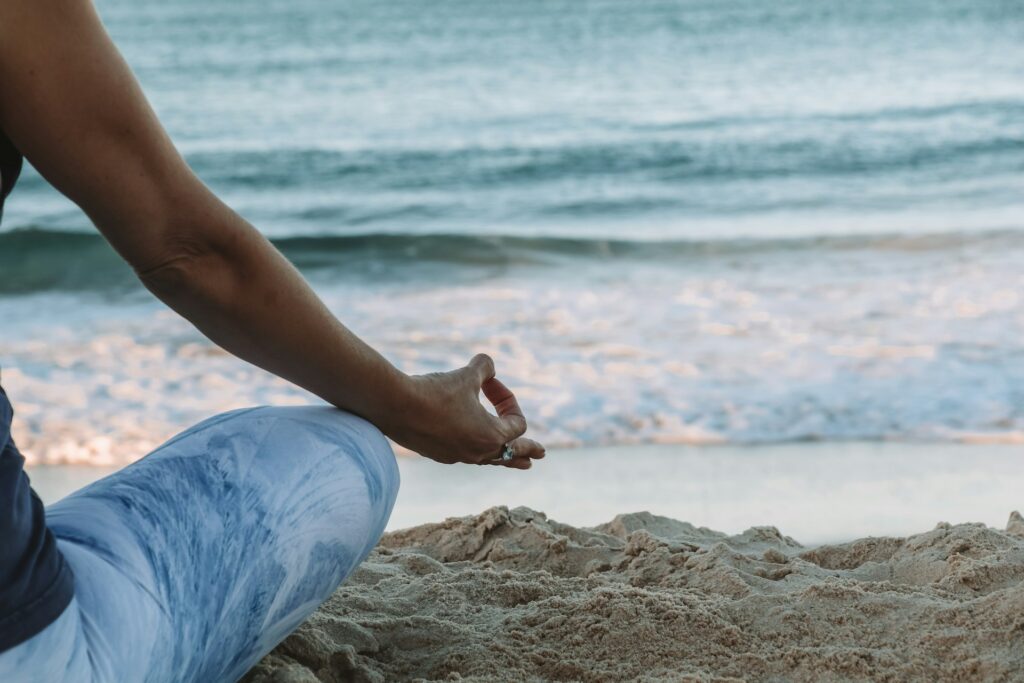How a simple daily practice transformed my relationship with stress and that persistent ringing sensation
You know that moment when everything feels too loud? Not just the world around you, but inside your head too? I’m talking about that persistent humming, ringing, or buzzing that seems to get louder precisely when you need quiet the most. If you’re nodding along, you’re definitely not alone in this experience.
I discovered something pretty remarkable last year during one of those particularly overwhelming weeks we all know too well. Between work deadlines, family obligations, and that constant low-level anxiety that seems to be everyone’s unwelcome companion these days, I was feeling frazzled. And yes, my ears were definitely letting me know about it.
That’s when a friend mentioned this breathing technique she’d learned. “Five minutes,” she said. “Just try it for five minutes.” I was skeptical – how could something so simple make any real difference? But desperate times, right?
The Science Behind the Magic
Here’s what I learned: our breathing patterns are intimately connected to our stress response. When we’re anxious or overwhelmed, our breathing becomes shallow and rapid, which signals our nervous system to stay in that heightened state of alert. The stress response can be reduced by consciously breathing using the diaphragm, creating a cascade of relaxation throughout our entire system.
What fascinated me most was discovering that this connection extends to our ears as well. Deep breathing is one of the most effective and widely practiced techniques for promoting relaxation, and is usually incorporated in tinnitus management. The relationship between stress and ear sensations is more significant than many of us realize.
My Go-To 5-Minute Routine
After experimenting with various approaches, I’ve settled on what I like to call my “Daily Reset” breathing practice. It’s become as essential to my routine as my morning coffee – and honestly, sometimes more effective at centering me for the day ahead.
The Foundation Breath (Minutes 1-2)
I start by finding a comfortable position – usually sitting in my favorite chair by the window, but honestly, I’ve done this everywhere from my car to bathroom stalls during particularly hectic days. The location matters less than the intention.
I place one hand on my chest and the other on my belly, then begin breathing naturally through my nose. Some people find it helpful to count steadily from 1 to 5 during each inhale and exhale. The goal isn’t perfection; it’s simply awareness of how your body moves with each breath.
The 4-7-8 Reset (Minutes 3-4)
This is where the magic happens. Take a deep breath in through your nose, inhaling for four seconds. Hold the breath for seven seconds. Slowly exhale for eight seconds. I repeat this pattern four times during this phase.
The first time I tried this, holding my breath for seven seconds felt like an eternity. Now, it’s become this lovely pause where everything just… settles. It’s like hitting a reset button for both my mind and that persistent ear sensation that tends to amplify when I’m stressed.
The Visualization Finish (Minute 5)
While you do deep breathing, use a picture in your mind and a word or phrase to help you feel more relaxed. I imagine breathing in calm, steady waves of peace, and breathing out all the tension and noise – both external and internal.
Sometimes I visualize the sound in my ears as simply another wave in an ocean, neither good nor bad, just part of the natural rhythm. This shift in perspective has been surprisingly powerful.
Beyond the Technique: What I’ve Learned
The most surprising discovery wasn’t just how this practice affected my stress levels or ear sensations – it was how it changed my entire relationship with discomfort. Instead of fighting against overwhelming moments, I now have this reliable tool that helps me navigate them with more grace.
I’ve noticed that consistency matters more than perfection. There are days when my mind wanders constantly during those five minutes, and that’s okay. There are multiple ways to practice mindfulness – meditation, deep breathing, exercise, music, journaling, and more – and whichever method you choose, you can learn to let go. The practice isn’t about achieving some zen-like state; it’s about creating a daily appointment with calm.
Making It Work for Your Life
The beauty of this practice is its flexibility. I’ve adapted it for different situations: a shorter 2-minute version for busy mornings, a longer 10-minute session when I really need to decompress, and even a modified version I can do discretely during meetings (yes, really).
Some days I combine it with gentle movement – maybe some shoulder rolls or neck stretches. Other times, I’ll do it while looking out at trees or clouds, letting the visual rhythm complement the breathing rhythm.
Finding Your Own Rhythm
What works for me might need tweaking for you, and that’s perfectly fine. Some people prefer breathing in for 3 seconds instead of 4, or find that focusing on the exhale feels more natural than the inhale. The key is experimenting to find what feels sustainable and genuinely helpful for your unique situation.
I’ve also learned that environment can make a difference. While I can do this breathing practice anywhere, having a designated “spot” where I regularly practice has created a sort of conditioning effect – just sitting in that chair begins to signal relaxation to my system.
The Ripple Effects
Here’s what I didn’t expect: this simple practice started influencing other areas of my life. I began noticing my breathing patterns throughout the day, catching myself when I’d slip into that shallow, stressed breathing mode. I became more aware of how my body holds tension, and more importantly, how to release it.
The persistent ear sensations? They’re still there sometimes, but they don’t dominate my experience the way they used to. It’s like I’ve learned to turn down the volume knob on my stress response, which seems to turn down the volume on everything else too.
Your Five-Minute Investment
If you’re reading this and thinking, “I don’t have time for another thing to add to my routine,” I totally get it. But here’s the thing: this isn’t really adding time to your day – it’s adding quality to the time you already have.
Those five minutes create a buffer zone between you and whatever chaos awaits. They’re like putting on emotional armor, except instead of making you harder, they make you more resilient and flexible.
Starting Today
Don’t wait for the perfect moment or the perfect setup. Start simple: just notice your breathing right now as you’re reading this. Take one conscious breath in through your nose, hold it for a moment, then slowly release it through your mouth. Feel that? That’s your reset button, available 24/7.
The most profound changes often come from the simplest practices, consistently applied. This breathing technique has become my daily gift to myself – five minutes of intentional calm in a world that often feels intentionally chaotic.
Whether you’re dealing with stress, ear sensations, or just the general overwhelm of modern life, your breath is always available as an anchor. It’s been there with you through everything, and it’s ready to help you navigate whatever comes next.
Try it today. Five minutes. Your mind and ears – and probably your whole nervous system – will thank you.

Disclaimer: This article shares personal experiences and general wellness information for educational purposes only. It is not intended as medical advice, diagnosis, or treatment recommendations. Individual experiences may vary significantly. If you have persistent ear symptoms, hearing concerns, or any health conditions, please consult with qualified healthcare professionals for proper evaluation and guidance. The breathing techniques described are general relaxation practices and should not be considered a substitute for professional medical care. Always speak with your healthcare provider before beginning any new wellness routine, especially if you have respiratory conditions or other health concerns.
Sources: Information in this article draws from various wellness resources including NHS guidance on breathing exercises for stress, Mayo Clinic materials on mindfulness practices, and peer-reviewed publications on relaxation techniques. Specific breathing patterns mentioned are commonly taught stress-reduction methods that have been widely studied and practiced in wellness communities.



